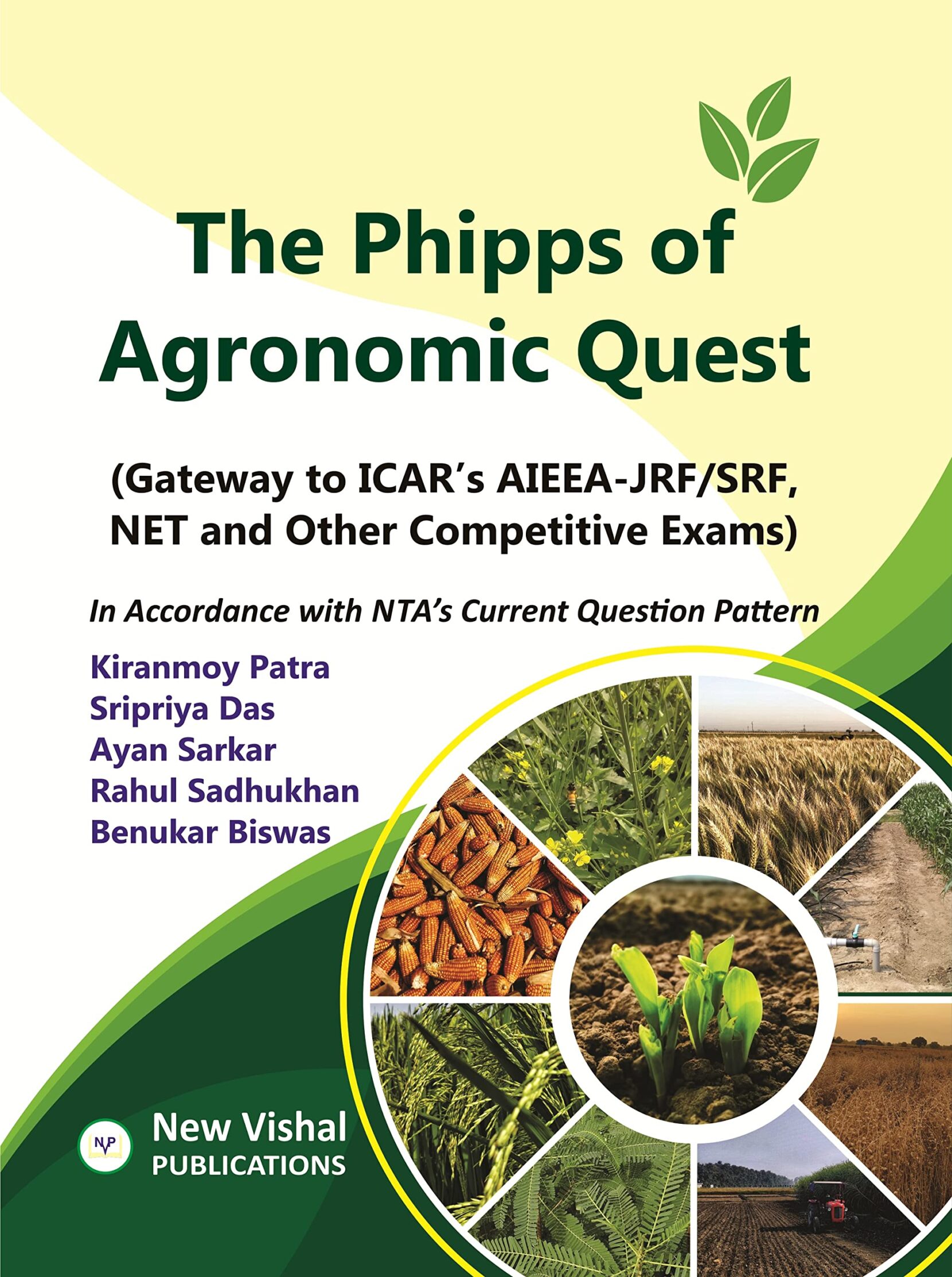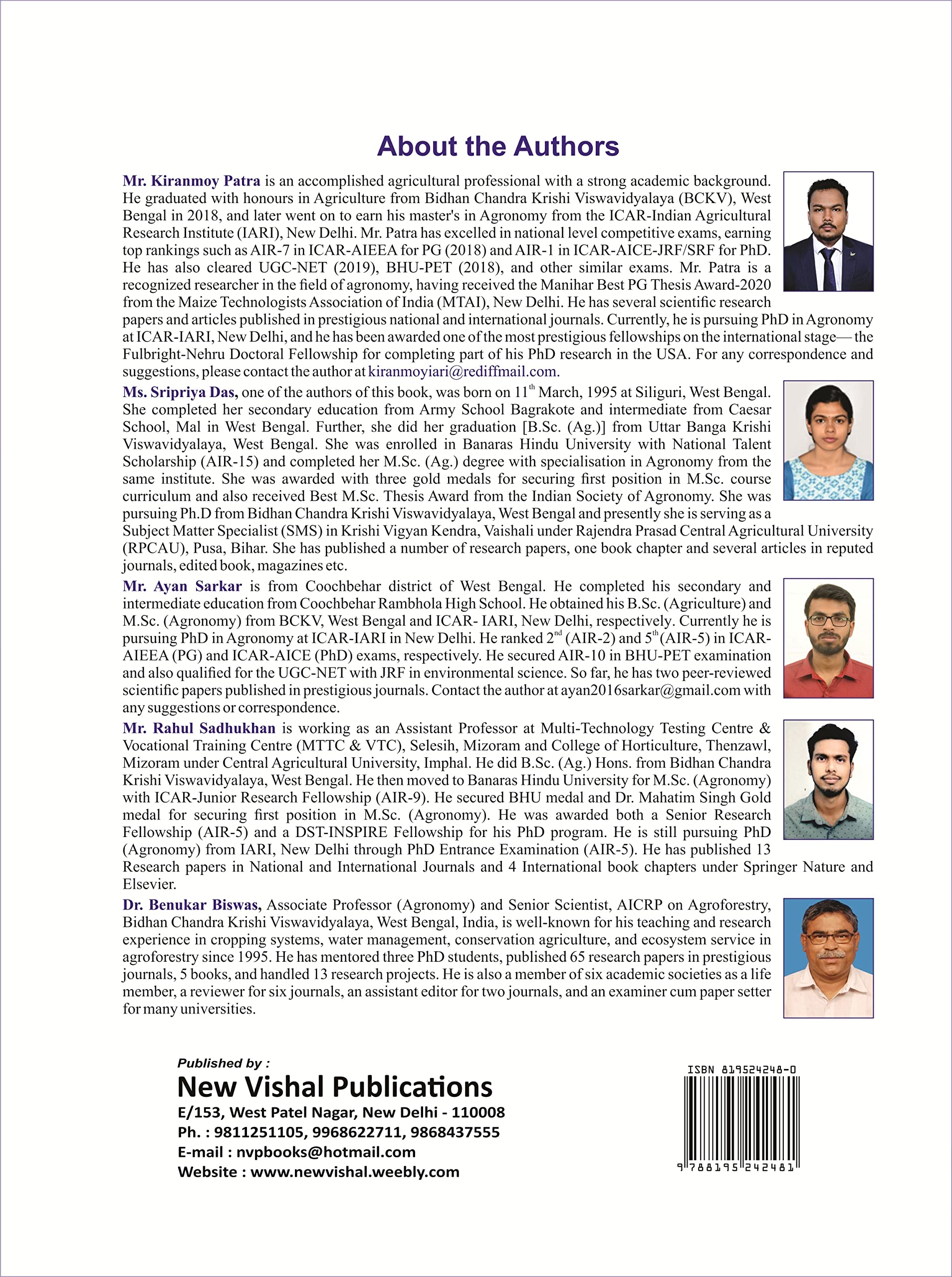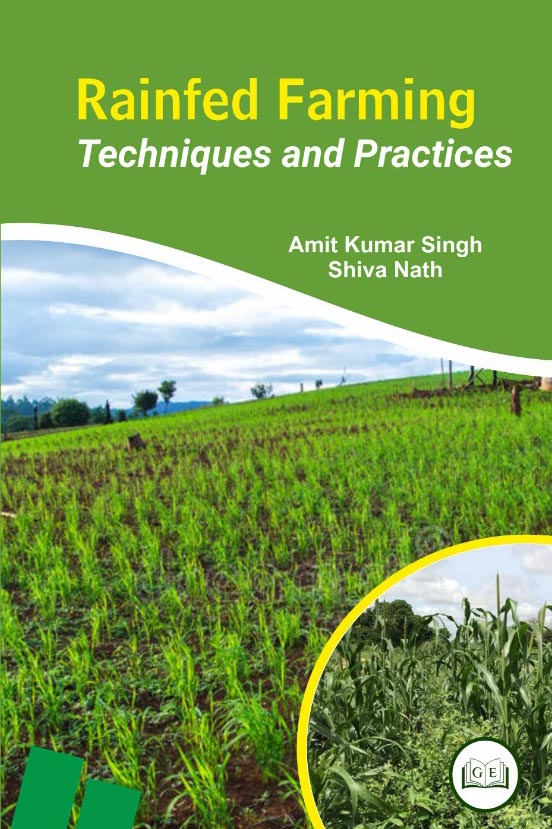Add to Wishlist
-4%
Soil Science: An Introduction
₹1,600.00 Original price was: ₹1,600.00.₹1,550.00Current price is: ₹1,550.00.
This book is written in simple language backed with illustrations, problems, case studies, and tables etc. is mostly based on the examples of the Indian literature on soils. It has attempted to cover all possible sub-disciplines of the soil science. Additionally, it also combines information on a general topic of societal importance entitled Soils and Human Society and many emerging disciplines like Soil, Water and Air Pollution; Carbon Sequestration and Climate Change; Application of Modern Tools viz., GIS, GPS, IT; etc.
Usually dispatched in 2 to 3 days
Safe and Secure Payment Gateway
Category:
Agriculture
Tag:
Exclusive
Book information
ISBN 13
978-8190379779
Number of pages
728
Format
Paperback
Language
English
Release date
2015
Related products
-15%
The Phipps of Agronomic Quest
Year of Publication 2
This book is a unique question bank which has been designed in accordance with the current question pattern followed in national level agricultural competitive exams, specifically NTA’s ICAR-JRF, SRF, NET, CUET, and so on, including straight multiple-choice questions with single correct answer, statement type and match the pair type questions. This book is a ‘ready to practice’ wholesome question set that will help the creditable students to test their knowledge on hand and to make them more confident in facing competitive examinations. This book opens the gate of information for agricultural students willing to become future Agronomists.
-15%
The Phipps of Agronomic Quest
This book is a unique question bank which has been designed in accordance with the current question pattern followed in national level agricultural competitive exams, specifically NTA’s ICAR-JRF, SRF, NET, CUET, and so on, including straight multiple-choice questions with single correct answer, statement type and match the pair type questions. This book is a ‘ready to practice’ wholesome question set that will help the creditable students to test their knowledge on hand and to make them more confident in facing competitive examinations. This book opens the gate of information for agricultural students willing to become future Agronomists.
-17%
Rainfed Farming: Techniques and Practices
This book analyses common rainfed farming systems and defines the principles and practices important to their effective functioning and management. The chapters of the book have been selected and arranged in such a manner as to lead the students through the entire gamut of rainfed agriculture supported by suitable examples and diagrams. The topics covered are most relevant in view of growing interests of rainfed agriculture technologies. The focus is on new concepts and approaches in dryland and rainfed lands, dryland farming techniques, watershed management and its components, agricultural technology for drylands, drought preparedness and management, water harvesting and its role in rainfed agriculture, integrated watershed management, strategies for mitigating and adapting to climate change in rainfed areas, role of mulching in soil and water conservation, agriculture’s effects on society and economy. The book is also supported with a comprehensive glossary and index in the end. This book will be useful to the students, teachers, progressive farmers, policy makers, extension workers and researchers working on various institutes and different universities.
-17%
Rainfed Farming: Techniques and Practices
This book analyses common rainfed farming systems and defines the principles and practices important to their effective functioning and management. The chapters of the book have been selected and arranged in such a manner as to lead the students through the entire gamut of rainfed agriculture supported by suitable examples and diagrams. The topics covered are most relevant in view of growing interests of rainfed agriculture technologies. The focus is on new concepts and approaches in dryland and rainfed lands, dryland farming techniques, watershed management and its components, agricultural technology for drylands, drought preparedness and management, water harvesting and its role in rainfed agriculture, integrated watershed management, strategies for mitigating and adapting to climate change in rainfed areas, role of mulching in soil and water conservation, agriculture’s effects on society and economy. The book is also supported with a comprehensive glossary and index in the end. This book will be useful to the students, teachers, progressive farmers, policy makers, extension workers and researchers working on various institutes and different universities.
-13%
Apiculture: Principles and Practices
By R P Singh
This is presented in a very readable way and concise description of information, easy-to-follow the apiculture activities. Specific concepts and detailed management techniques are covered in a matter-of-fact and easy to implement way. It covers all aspects catering for beginners and experienced bee-keepers alike. This book also helps the readers to easily learn about honey bee biology, the establishment of apiaries and it’s management. It Includes the glossary on the topics discussed. The book contains nine chapters covering all aspects of apiculture which include introduction to apiculture, bee-keeping equipments, honey-bee colony, methods of queen rearing and bee breeding, hive and bee’s products and their uses, pollination, handling bees wax and pollen trapping, managing diseases and pests, apiculture entrepreneurship and lac culture and more. This is an excellent book for bee-keepers, extension workers, progressive farmers and persons engaged in apiculture.
-13%
Apiculture: Principles and Practices
By R P Singh
This is presented in a very readable way and concise description of information, easy-to-follow the apiculture activities. Specific concepts and detailed management techniques are covered in a matter-of-fact and easy to implement way. It covers all aspects catering for beginners and experienced bee-keepers alike. This book also helps the readers to easily learn about honey bee biology, the establishment of apiaries and it’s management. It Includes the glossary on the topics discussed. The book contains nine chapters covering all aspects of apiculture which include introduction to apiculture, bee-keeping equipments, honey-bee colony, methods of queen rearing and bee breeding, hive and bee’s products and their uses, pollination, handling bees wax and pollen trapping, managing diseases and pests, apiculture entrepreneurship and lac culture and more. This is an excellent book for bee-keepers, extension workers, progressive farmers and persons engaged in apiculture.





